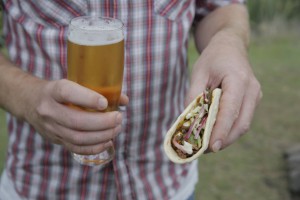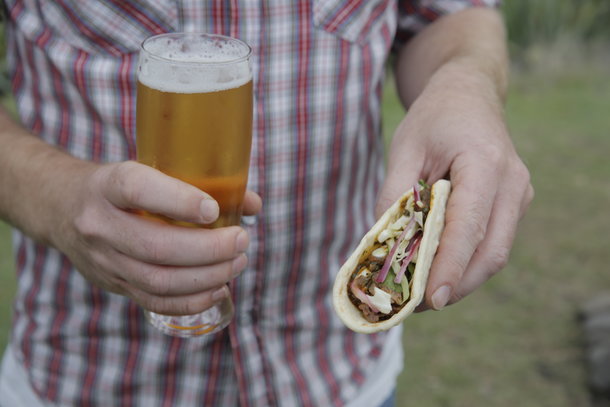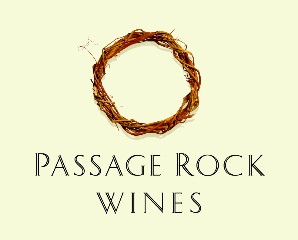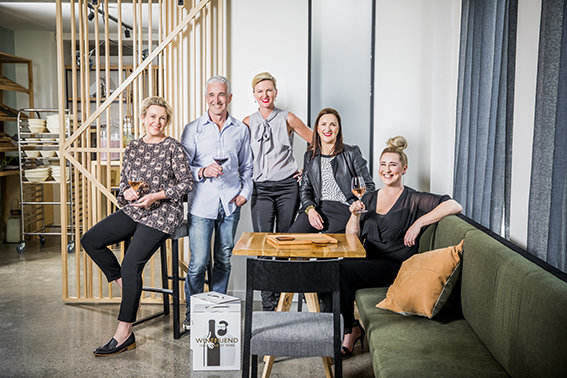 New Zealand Beer Writer of the Year Neil Miller takes a look at the world’s most popular beer style – golden lagers.
New Zealand Beer Writer of the Year Neil Miller takes a look at the world’s most popular beer style – golden lagers.
Broadly speaking there are two types of beer in the world – ales which are top fermented at warmer temperatures, and lagers which are bottom fermented at cooler temperatures for a longer of period of time. While there are red lagers (such as Monteith’s Celtic) and even black lagers (such as Black Mac), most people associate the style with golden international lagers.
Golden lager is by far the best selling beer style in the world. Every country now drinks more lager than ale (Britain and Belgium were the last to succumb), with sales dominated by global lager brands such as Heineken, Stella Artois, Budweiser, Kirin, Carlsberg and Tsingtao. New Zealand is no exception and brewers here expect the trend to continue despite the rise of craft beer.
Kurt Gross is National Beer Ambassador for Lion, a company which makes Mac’s Gold, Speight’s Summit, Becks and Stella Artois, and imports Budweiser and Corona. He says lagers are “clean, refreshing, easy drinking. I always think refreshing when I think of lager. They are a thirst quencher for a hot summer day and a style which suits our hop varieties.”
“I’ve been to Vietnam and can’t imagine drinking a stout there. Lager suits warmer climates which is why it is so popular in Australia, Asia and New Zealand. It is purely about drinkability and that is why most mainstream beers here are lagers,” Gross says.
He “loves” the rise of craft beer and believes it will continue. However, Gross says “lager is still going to be very strong. Craft beer will have more of an influence on other styles such as pale ale or pilsner far more than lager.” In his view, lager is “still a very legitimate style of beer. It has been around a long time and is the dominant style in the world. I don’t see it changing anytime soon though I would love to see more craft lager.”
Gross argues that “quality crystal clear lager is the hardest style of beer to brew in some ways. They have to be clean, crisp and mildly flavoured. If you get anything wrong, it is very hard to cover up.”
Independent Liquor is the third largest brewery in New Zealand. Adam Maxwell, General Manager of Marketing for their Boundary Road brand, says “lagers are enormous and will continue to be so.” They make Carlsberg, Haagen, Boundary Road The Chosen One Golden Lager and Founder’s Golden Lager, as well as importing Asahi, Budvar and Estrella Dramm.
Asked what makes a good lager. Maxwell said “at the base of it, the quality of the ingredients you put in. If you put good stuff in you get good stuff out. That includes the best quality malts, yeast and water.” He believes lager is so popular because “it is refreshing and the brands are important. People want an experience from their beer. If they are drinking Carlsberg they want a quality European brand. If they drink Boundary Road, they want something hoppier and more challenging, more of a craft beer.”
Going forward, Maxwell believes lagers will continue to dominate. “They have taken over from darker beers like Tui and Speight’s. We think consumers are looking for better quality, smaller volumes, and better ingredient stories,” he said.
A timeless beer style
Alex Biedermann, National Beer Ambassador for DB Breweries, qualified as a Braumeister (Brewmaster) in Germany. The first lagers were conditioned in German ice caves, which explains why the term lager is derived from the German word “lagern” meaning “to store”. Modern refrigeration later helped lager become the pre-eminent beer style in the world.
DB makes Heineken, Tiger, Export Gold, Export Dry, Export 33, Tui Lager, Monteith’s Golden and Flame. Biedermann says the definition of a good lager depends on the consumer and their tastes.
“In Mexico a lager is something that is very light in taste, refreshing and thirst quenching, often using maize as a main ingredient. Brewers in Brazil use a lot of sugar in their lagers. In Germany, the beer culture and the difference of what people would rate as a good lager would vary from South to North – from malt driven and dark in the South, to more and more hoppy and lighter in colour the further north you go,” Biedermann says.
Turning to New Zealand, Biedermann argues “nowadays it’s often only premium beers that get referred to as lagers. They often have a long history, showing their greatness in their delicate, subtle and refreshing attributes and sessionability. In my brewer’s opinion, the popularity comes back to the vision, the art and at the same time, the science of brewing. The creation of the recipe, the well thought out ingredients, the brewer – as the artist – putting these into the process in the right moment, in the right amount, all while following the recipe scientifically and accurately, as well as working clean and keeping the yeast happy. Being an artist and visionary can be hard. So, in my opinion, a lager that is good and popular speaks to the people, reaches their needs and is timeless.”
In general, craft brewers have eschewed the term lager, preferring to make pilsners and dark lagers instead. Chris Mills, owner and brewer at Kereru Brewing in Upper Hutt, has bucked the trend with his Maidstone Lager, a malt driven lager made with a generous blend of Gladfield Vienna malt and pilsner malt. He freely admits it was inspired by Mexican lagers like Corona and he is “not averse to having a slice of lime in it.”
Mills says a good lager has “little fermentation character and the focus is on the cleanliness of the malt.” He agrees it is a difficult style saying “there is nowhere to hide because any issues show up quite clearly. In our case, the lager needs time in the cold storage tank to clean itself up. That gets rid of any sulphur character.”
He puts the abiding popularity of lager down to the fact that “a lot of people don’t like the bitterness of hops. They might say ‘I’m not a beer drinker but I will have a lager.’
Our Maidstone Lager is made with hops which originally came from North Germany. The beer is just plain old refreshing and goes well with just about any food. A great lager is simply a pleasant malty beverage.”
Mills believes “lagers are harder to brew and they occupy precious brewing tank space for a longer time. However, brewers can make up on yield what they lose in fermenting time.” He predicts a bright future for lager saying there is “lots of room for lagers to develop and to become as exciting as the ale side of things.”



